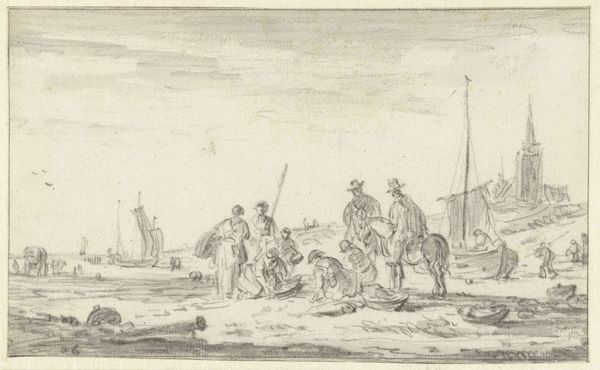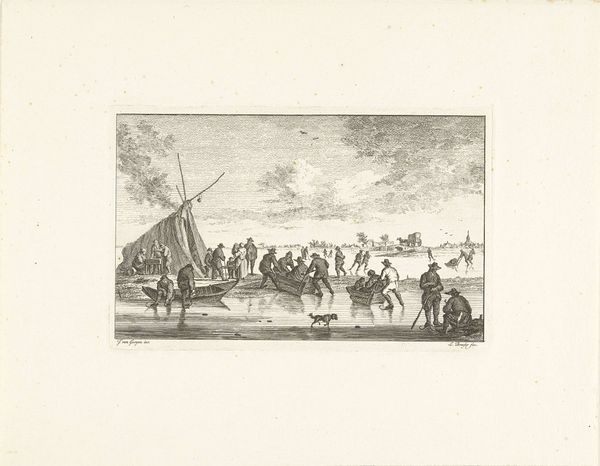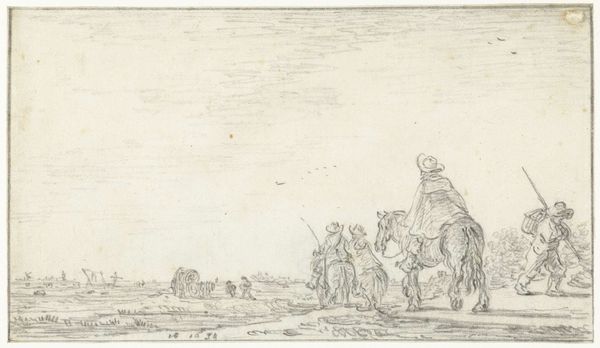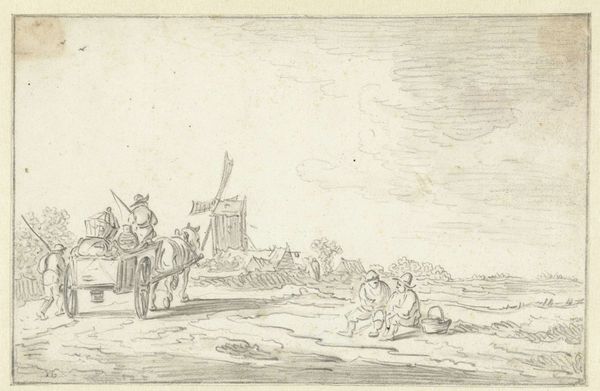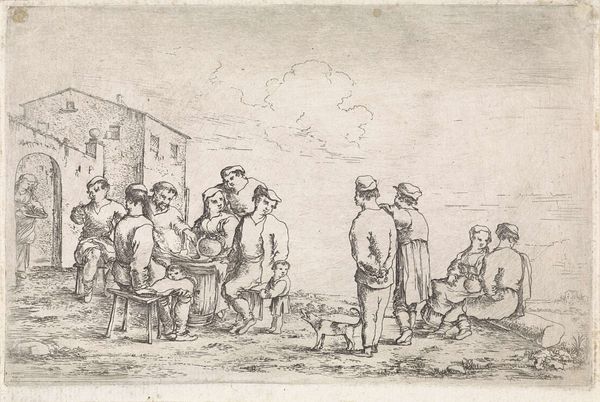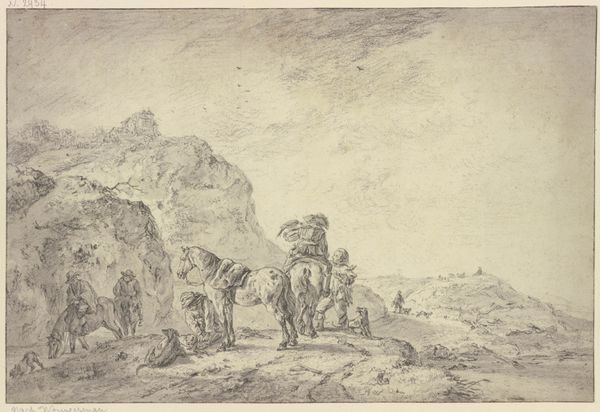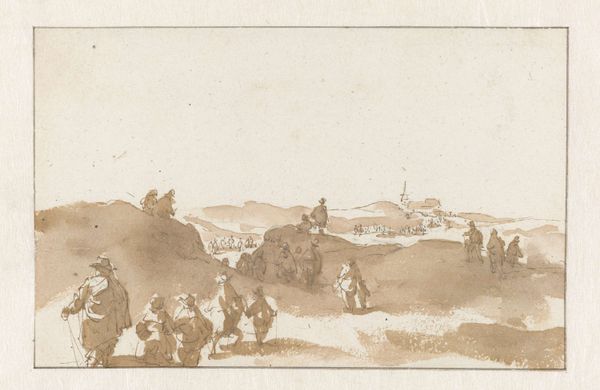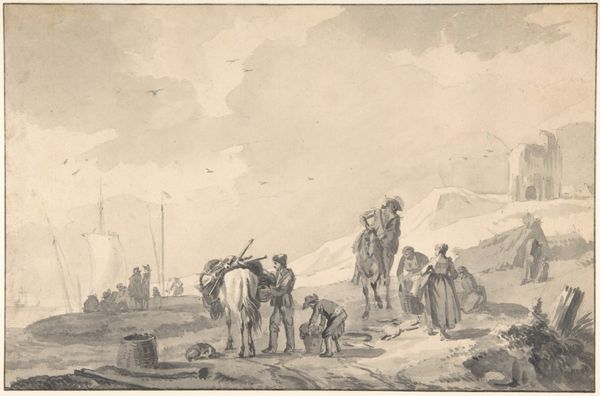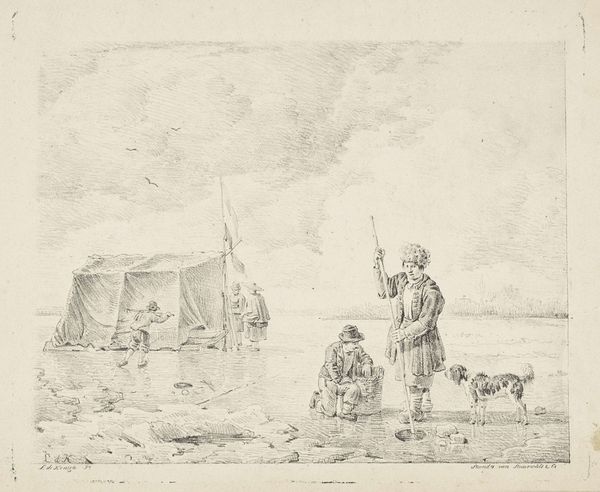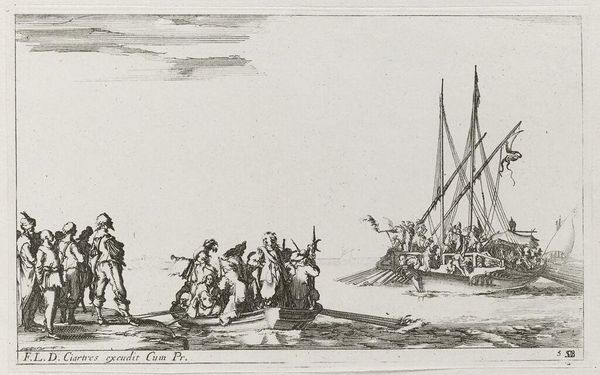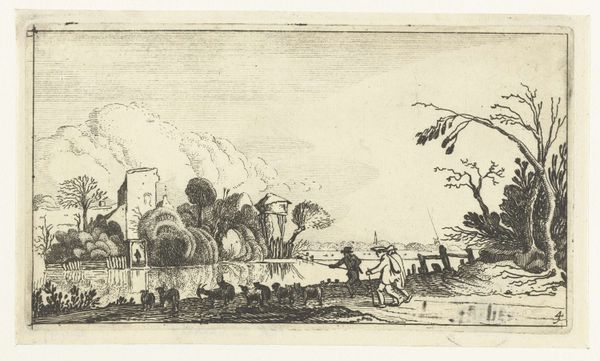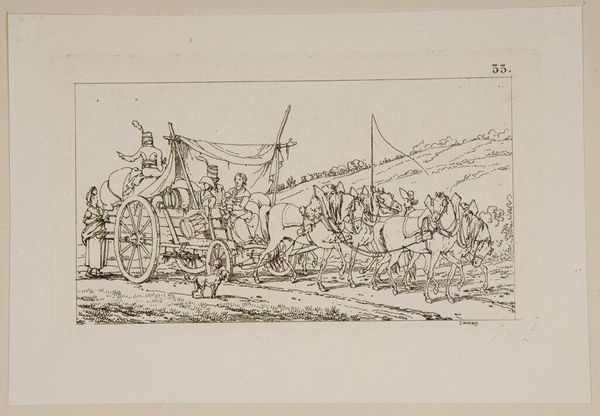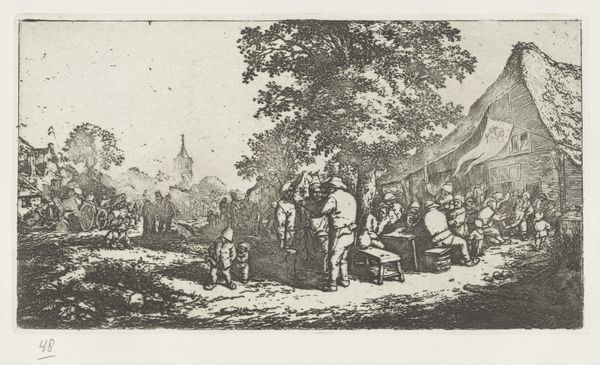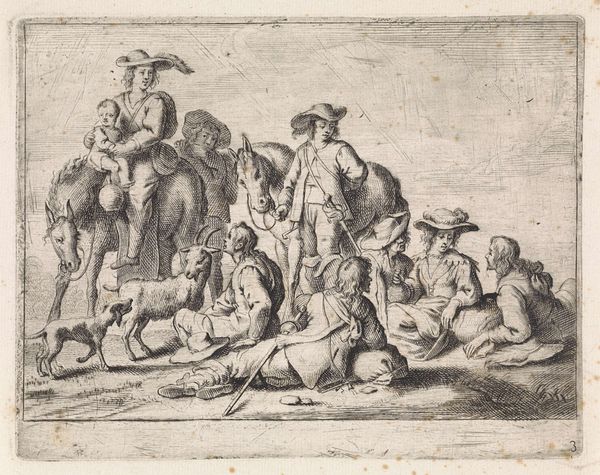
print, etching
#
dutch-golden-age
# print
#
etching
#
old engraving style
#
landscape
#
figuration
#
genre-painting
#
sea
Dimensions: height 184 mm, width 276 mm
Copyright: Rijks Museum: Open Domain
Curator: Simon de Vlieger created this scene, titled "Fishermen on the Beach," sometime between 1610 and 1653. He employed etching to create this compelling print. Editor: There's a melancholic air to it, wouldn't you agree? The composition feels open, yet the figures huddle together on the shore. The greyish tonality emphasizes this somber feeling, too. Curator: These types of scenes showing everyday life gained prominence during the Dutch Golden Age. Think of genre painting: rather than grand historical narratives, we see a focus on the lives of ordinary people. Prints like this would have been widely circulated, a burgeoning art market really allowing artists like de Vlieger to reach a broad audience. Editor: And this image is filled with the laboring class, with a dog at the lead alongside fishermen unloading a fresh catch. Their posture—their very existence—conveys their societal roles and even socioeconomic limitations. The presence of women and children highlights how family units participated in these grueling activities to meet social needs. Curator: It does raise interesting questions, doesn’t it, about representation? Were these depictions meant to ennoble the working class or simply reflect a pre-existing social order? I imagine de Vlieger’s patrons probably were not from fishing villages, likely purchasing art and images from an entirely different experience. Editor: Precisely. And considering how Dutch society profited from its maritime power through trade and even colonialism, these genre scenes depicting "simple" harbor folk present a complex relationship to maritime economic progress and its implications on all sectors of society. One must consider a darker, obscured story when we romanticize art that lacks a comprehensive image of history. Curator: Perhaps seeing such prints gave urban audiences a sense of connection to the coast, given how important maritime activities were to their economic success? The market made space for artists like Vlieger to have a fruitful business! Editor: True, but now it encourages us to question this genre. It is important to acknowledge this artwork with complexity, allowing audiences to appreciate its existence while reflecting on a painful history, and, frankly, making demands that our institutions respond to current dialogue surrounding power dynamics within art and broader contexts of global politics.
Comments
No comments
Be the first to comment and join the conversation on the ultimate creative platform.
